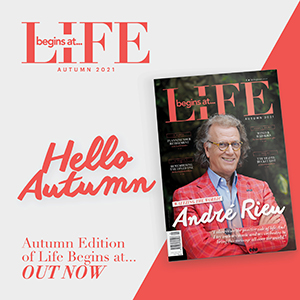Could your thoughts make an illness worse, or better, or go away altogether? What are we to make of hospital records that show post-surgery patients having shorter hospital stays, fewer complications and fewer pain-relief drugs if they are in a room with a view of garden and trees, compared to a view of a brick wall? In an excerpt from How to stay Healthy, Active & Sharp in Retirement, David McRae discusses the impact our head can have on our bodies.
What about the American newspaper editor with an incurable, painful condition, making a full recovery after some months of belly laughing from viewing comedy movies?
And how about Australian veterinarian Dr Ian Gawler, who recovered from terminal, “one-month-to-live” metastatic bone cancer using intensive meditation practice?
These examples at least raise the possibility that a person’s attitude, or how they think and feel, may be an important factor in recovery from illness. Henry Ford is credited with saying: “If you think you can do a thing or think you can’t do a thing, you’re right”. Does the influence of mind on health boil down to this observation by the man behind mass production of automobiles? There may well be more to it than that, but it is a good starting point. Let’s look further at the well-publicized case of Ian Gawler.
We know that Gawler practiced meditation for many hours per day during those few years that his health and life were hanging in the balance. In this he was trained and advised by Melbourne doctor Ainslie Meares, author of Relief without Drugs (1967), as well as by other meditation teachers and books.
Meditation primarily works upon one’s state of mind. Dr Meares believed that many cancers grew because the patient’s immune system activity was being impaired by stress. He offered a type of meditation that could profoundly reduce anxiety and stress.
Ian Gawler also reports that he made some important mental decisions following his terminal prognosis. He believed that the medical specialists were basing their prognosis for him upon averages and the norm, and there was no reason he should acquiesce to being an average or a norm (personal communication between Gawler and the writer). Some time later in his continuing quest for healing a ‘holy man’ looked into his eyes and soul and told him “You are already healed”. Ian reports that from that moment he was ready to fully believe it. Over the next year his extensive bony tumours broke down and resolved.
This ability to see himself being well in the face of the gloomy medical prediction may have been the decisive factor. If so, it is very much in keeping with Henry Ford’s simple statement about our minds. It is an example of mind influencing body but somewhat different from attributing his recovery to the effects of meditation. In fact Ian himself believes both factors played a part, along with other influences such as a rigorous ‘healing food program’.
For over 50 years there has been emerging a field of medical work now labelled as ‘Mind-Body Medicine’. It includes most of the treatment interventions that are undertaken largely by the patient’s efforts, rather than being done by a doctor for the patient. We can also talk about ‘Lifestyle Medicine’ and ‘Self-Help Healthcare’.
Mind-Body medicine includes any psychological interventions that can change a patient’s attitude and expectations; for example, things that can shift one from gloominess and depression to hope and optimism. It also includes lifestyle interventions like exercise and nutrition since these can only be driven by the determination of the patient.
Is there any science underpinning Mind-Body Medicine’s methods? Over the same period of decades there has emerged a research field sometimes known as psychoneuroimmunology, or PNI. The name tells it all. Psycho (the mind), Neuro (the nervous system that receives and sends messages all over the body), Immunology (our immune system, or inbuilt disease-fighting mechanisms). PNI research has shown that most kinds of white blood cells, the immune system cells that fight disease, have receptors for neurotransmitters all over them. In fact the brain and the immune system are constantly ‘talking’ to each other with the signalling being bi-directional. If the term ‘psychoneuroimmunology’ wasn’t already too long it should include ‘endocrine’ as well, for our glands and hormones too play a part in this communication network.
Various kinds of emotional stress and depressed mental states have been shown to be linked to low numbers and low activity of many of the immune system cell types. Our minds, it seems, can make our bodies succumb to or fight disease. What of Norman Cousins, editor of the Saturday Review, who laughed himself out of pain and into recovery from severe ankylosing spondilitis? He later wrote Anatomy of an Illness (1979) and other books. Is there any explanation for his recovery?
Biological research on laughter and humour has shown interesting health effects. “Mirthful laughter” has been shown to produce significant reductions in the levels of circulating stress hormones. A study of breast-feeding mothers showed that humour could increase the level of certain antibodies in the mother and her breast milk, as well as reduce the amount of urinary tract infections.
Among other benefits of meditation, or mindfulness practice, is its great potential for pain relief.
In Norman Cousin’s case he was convinced that he recovered as a result largely of laughter, induced by watching Marx Brothers films, and also taking very large doses of vitamin C. He checked himself out of the hospital and into a nearby hotel room so that he could still be seen by his doctor, but not have to endure the obstruction of some hospital staff to these ‘unproven’ therapies.
As with Ian Gawler we see someone using a range of self-directed methods; or rather, methods that can be the product of a physician-patient partnership, with the patient’s input being important.
Norman Cousins went on to be an Adjunct Professor at the medical school of UCLA, studying and teaching on the ‘biochemistry of human emotions’ and the role of the patient in medicine. In Anatomy of an Illness he wrote:
“I have learned never to underestimate the capacity of the human mind and body to regenerate – even when prospects seem most wretched. The life force may be the least understood force on earth.”
Dr Patch Adams is famous for his advocacy of fun, creativity, humour and clowning in health care. In his 1993 book Gesundheit he writes:
“Humour is an antidote to all ills. I believe that fun is as important as love… Philosophically speaking, I’m surprised that anyone is ever serious.”
Dr Adams leaped to widespread, international fame when his life and work were portrayed in the 1998 film Patch Adams, in which Robin Williams played the doctor. Not only are sick people in need of Mind-Body medicine, Patch believes the entire medical industry is bedevilled with a psycho-spiritual malaise:
“The practice of medicine is hurting at many levels. Patient discontent is so great that many are resorting to lawsuits. Many healthcare professionals are so dissatisfied that they are quitting or even killing themselves. Few if any happy hospitals exist. Most people hate going to hospital and have traumatic experiences when they do. Yet it doesn’t have to be this way… Let us call on humour to lend a hand and make medicine fun.”
My vocational work has included counselling and teaching meditation methods to people with serious illness, both physical and emotional. Among other benefits of meditation, or mindfulness practice, is its great potential for pain relief. Many years ago I remember teaching a meditation class in which a general practitioner attended as an observer. He volunteered for a demonstration, having come into the class with a bad headache. The process in which I guided him involved mentally scanning the pain and softly reporting to me its size, shape and other qualities. This was done once every two minutes, with a breathing imagery process performed in between.
On first scanning his headache he reported it as the size of a fifty cent coin, and dense and hard. Two minutes later it was like a twenty cent coin. Next a ten cent coin, and then five cents. I was nearly laughing out loud at what a text book example he was providing, but he was practicing in great earnestness with eyes closed. At his next scan he tried to report: ” … it’s ummm … ahhh … errr … I can’t find it, it’s gone!” No doubt this doctor had a headache of a kind amenable to complete remission in a matter of minutes. However, I have witnessed patients with serious cancer pain achieve significant pain management when persistent with meditation. It does rely on the person having a degree of determination or belief that their own action can make a difference, thus this kind of therapy may only be for some people. But I believe that Mind-Body Medicine could be useful for a great many more people than are currently led to it by their doctor. It is sadly neglected in much medical training and practice.
FURTHER READING
 This excerpt was taken from How to stay Healthy, Active & Sharp in Retirement, compiled and edited by Paul and Julianne McKeon. It is available for purchase via www.mylifechange.com.au.
This excerpt was taken from How to stay Healthy, Active & Sharp in Retirement, compiled and edited by Paul and Julianne McKeon. It is available for purchase via www.mylifechange.com.au.
This particular chapter was written by David McRae, BSc (Hons); Grad Dip Counselling & Human Services. David studied traditional meditation practices concurrently with his science degree in the 1970s.
He found his skills in demand at the Gawler Foundation, a Melbourne GP Association, and the medical school at Monash University. He now practices in Coffs Harbour.





















Add Comment